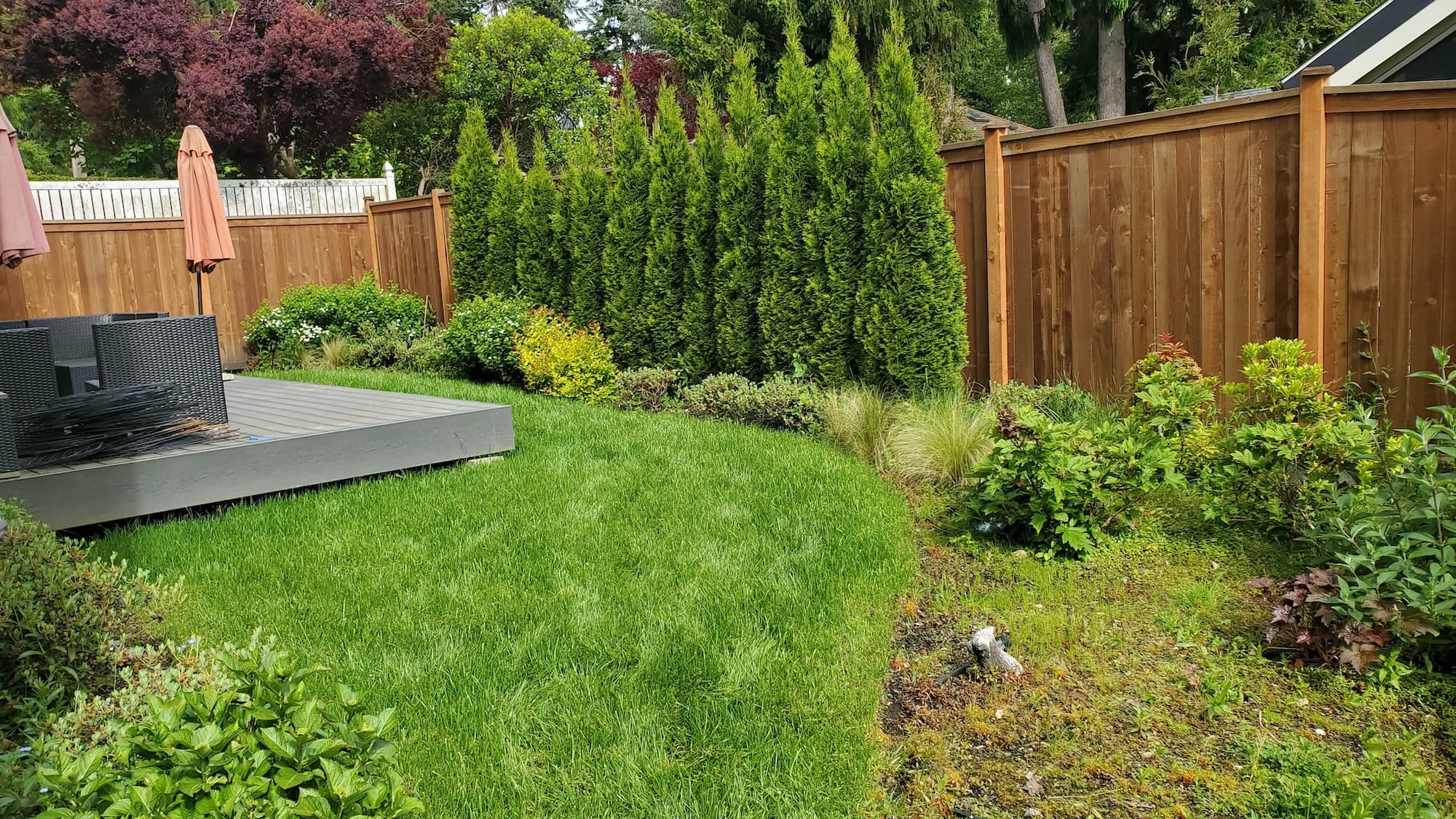West Seattle Shrub Resprout Prevention
Homeowner’s Issue
West Seattle properties age fast because the climate and soils favor vigorous regrowth. The neighborhood’s maritime winters and mild, dry summers mean shrubs get a long wet season to root and a short dry season that stresses shallow-rooted plants. Many lots near Alki and Lincoln Park sit on compacted fill or glacial till — roots cling to clay, and crowns hide under moss and leaf litter. North-facing slopes, dense tree canopy, and narrow yards create constant shade and high moss pressure; south-facing slopes get drought stress that triggers sucker shoots after pruning.
Typical homeowner complaints: the same privet, laurel, or hydrangea stumps that were cut last year are back; trunks re-sprout from crowns and roots; hedge lines look patchy after quick trims; drainage channels get clogged by cut stems. HOAs and curb-facing properties add pressure for tidy edges and clear sightlines. Sustainable, no-herbicide approaches are the practical answer here — mechanical crown excavation, repeated coppice cycles, deep mulching, soil improvement, and targeted replanting with native, low-resprout species reduce the workload long-term. Expect to invest a season or two of focused work on stubborn shrubs; the payoff is fewer repeat visits and a landscape that behaves during West Seattle’s rainy season and summer dry spells.
Our Quality Service
We stop resprouts using mechanical and cultural methods only — no chemical herbicides. Work starts with a site assessment to identify species, root patterns, and slope/drainage issues. Typical tools: loppers, pruning saws, root saws, mattocks, stump grinders (when needed), and hand-digging tools. For steep spots we use rope access and staging boards to protect lawns and slopes.
Timelines: small yards/hedges — single 2–4 hour visit; medium jobs — half-day to full day; tough root systems or stump work — 1–2 days or scheduled follow-ups. We schedule major removals in late spring or late summer for best regrowth control, and mulching/soil work in fall when materials are plentiful.
Local insight: we favor deep mulch (organic), root crown excavation on laurel/privet, repeated cutting/coppice for species that resprout, and replacing chronic resprouters with natives or low-suckering alternatives. We also address drainage problems that encourage suckering by adding gravel trenches or grading where feasible. Benefits are safer sightlines, reduced maintenance, improved curb appeal, and a stable, low-input landscape.
What’s Included
- Onsite assessment and species identification.
- Selective pruning and crown/root collar excavation to remove resprout sources.
- Stump grinding or hand-excavation when needed.
- Deep organic mulching or chip-mulch redistribution.
- Clean-up and hauling of debris (haul-away or green-bin/compost option).
- Follow-up visit within 2–12 weeks for check and repeat coppicing if required.
Options / Upgrades
- Mulch + fabric layer (cardboard under mulch for high weed pressure).
- Organic soil amendment and compost top-dress.
- Native replacement planting (low-resprout selections).
- Onsite chipping vs. full haul-away; green-bin composting on request.
- Drainage tweaks: gravel trenches, small regrades, dry creek installation.
Before & After / Expectations
Be honest: removing resprout-capable shrubs is noisy and messy. Expect chainsaw or stump grinder noise, piles of brush, and a work footprint on lawns and beds. Access matters — narrow gates and steep steps add time and may require extra crew.
Post-service timelines: initial regrowth monitoring is 2–12 weeks; some species need repeated coppicing over a season. We leave options for chips as mulch or haul away; chips left onsite will suppress weeds and improve moisture retention in West Seattle’s rainy cycle.
Care tips for West Seattle
- Watering: established shrubs rarely need summer watering unless they were replaced or newly planted. Water new plants deeply during dry July–September spells.
- Pruning windows: late summer for many shrubs to reduce resprout vigor; structural pruning in late winter when possible.
- Moss/ivy: keep crowns and soil clear of moss and leaf litter to reduce moisture-trapping and root competition.
- Replanting: choose natives or clumping shrubs to minimize root suckering and comply with HOA sightline rules.
FAQs (3–5)
Q: Will you use herbicides to stop resprouts?
A: No. We use mechanical removal, mulching, crown excavation, and repeat cutting. All methods are sustainable and chemical-free.
Q: How many visits before the shrub is controlled?
A: For most species, 1–3 visits across a growing season. Stubborn root systems can take a year of follow-ups for reliable control.
Q: Do you haul away debris or leave wood chips?
A: Both. Choose haul-away, onsite chipping as mulch, or green-bin composting if your service has access. We’ll quote both options.
Q: Do you work on slopes and small yards in West Seattle?
A: Yes. We bring boards and rope-in techniques for steep lots common around Admiral and Pigeon Point. Narrow access may increase time and cost.
Call to Action
West Seattle homeowners: if your shrubs keep coming back, book a free estimate. We’ll assess the resprout source, give a clear mechanical plan, and schedule follow-ups so your yard needs less attention from you. Quick scheduling available; seasonal windows fill fast.
Email: neatandtidyseattle@gmail.com
Phone: 206-538-9344
Licensed • Bonded • Insured
Ready for a yard that stays neat? Book a visit and we’ll show you the sustainable, permanent fixes that work on West Seattle slopes, mossy beds, and seaside exposures.










